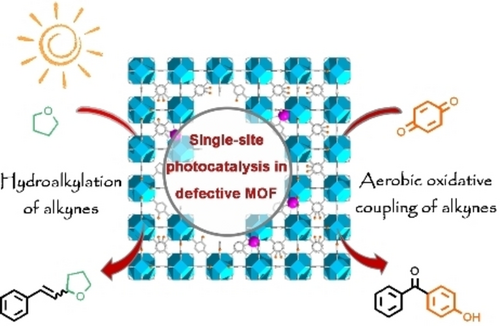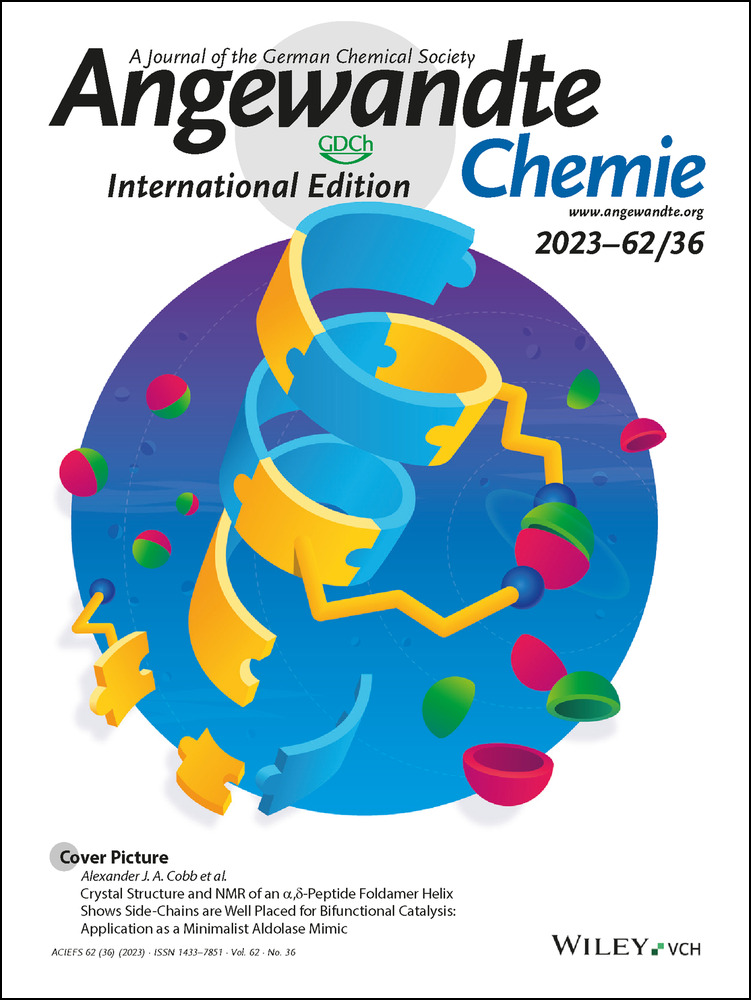Controlled Partial Linker Thermolysis in Metal-Organic Framework UiO-66-NH2 to Give a Single-Site Copper Photocatalyst for the Functionalization of Terminal Alkynes
Graphical Abstract
A straightforward method of controlled partial linker thermolysis allows the microporous metal–organic framework (MOF) photocatalyst UiO-66-NH2 to expand its porosity with a tailored pore environment. The resulting material accommodates single-site Cu species, shows significant mesoporosity and enhanced charge photogeneration. It has excellent performance in photocatalytic reactions for the functionalization of terminal alkynes.
Abstract
Metal–organic frameworks (MOFs) with expanding porosity and tailored pore environments are intriguing for catalytic applications. We report herein a straightforward method of controlled partial linker thermolysis to introduce desirable mesopores into mono-ligand MOFs, which is different from the classical thermolyzing method that starts from mixed-linker MOFs. UiO-66-NH2, after partial ligand thermolysis, exhibits significant mesoporosity, retained crystal structure, improved charge photogeneration and abundant anchoring sites, which is ideal to explore single-site photocatalysis. Atomically dispersed Cu is then accommodated in the tailored pore. The resulting single-site Cu catalyst exhibits excellent performance for photocatalytic alkylation and oxidation coupling for the functionalization of terminal alkynes. The study highlights the advantage of controlled partial linker thermolysis to synthesize hierarchical MOFs to achieve the advanced single-site photocatalysis.
Conflict of interest
The authors declare no conflict of interest.
Open Research
Data Availability Statement
The data that support the findings of this study are available in the supplementary material of this article.





